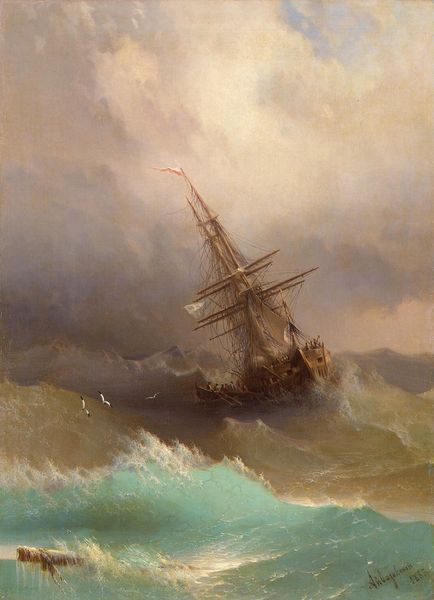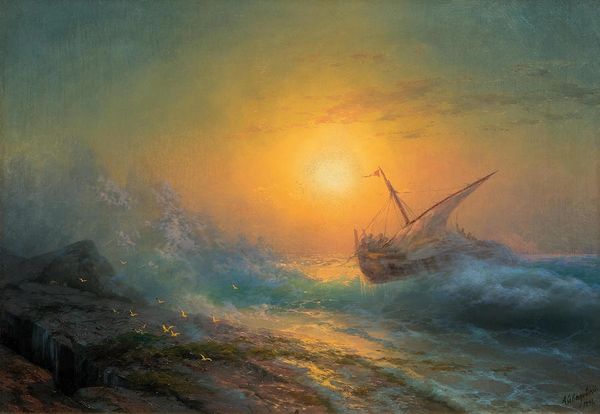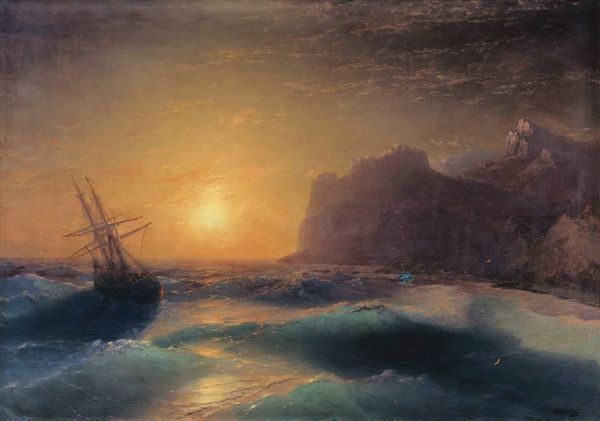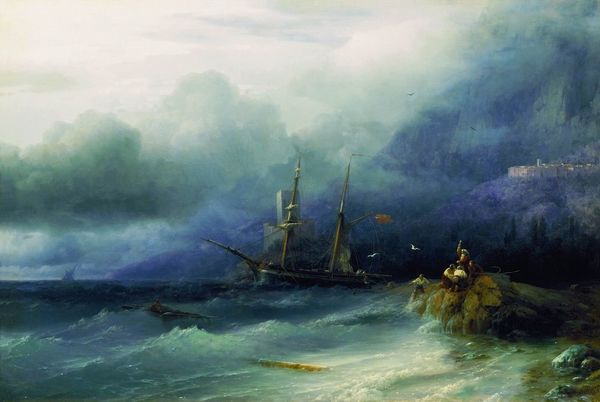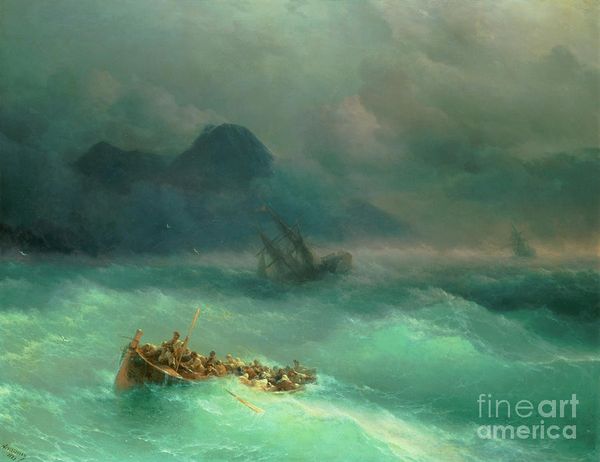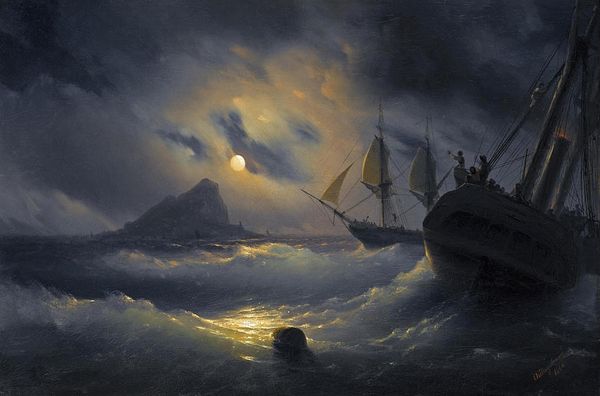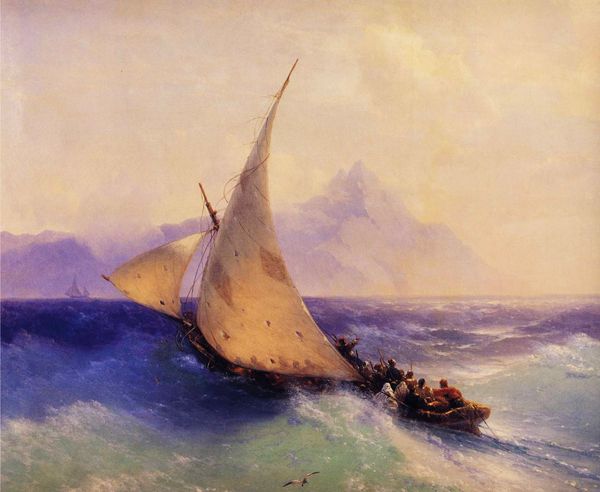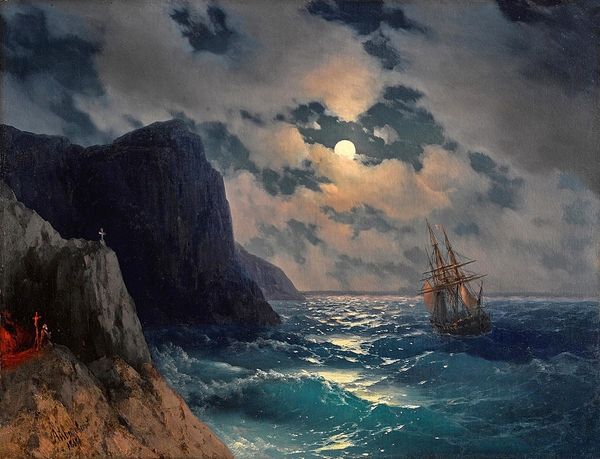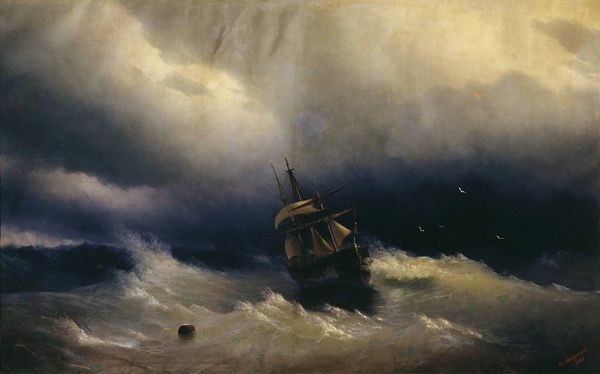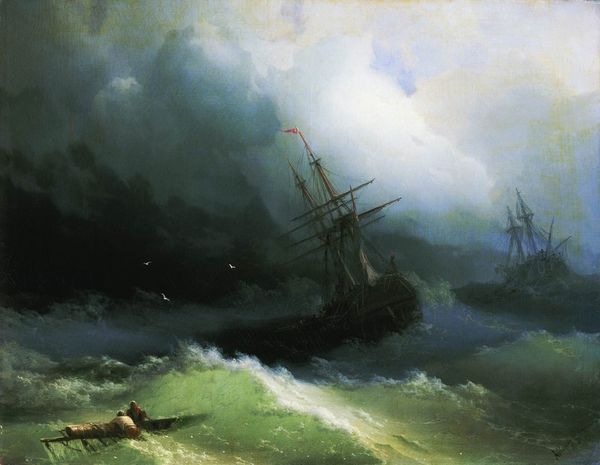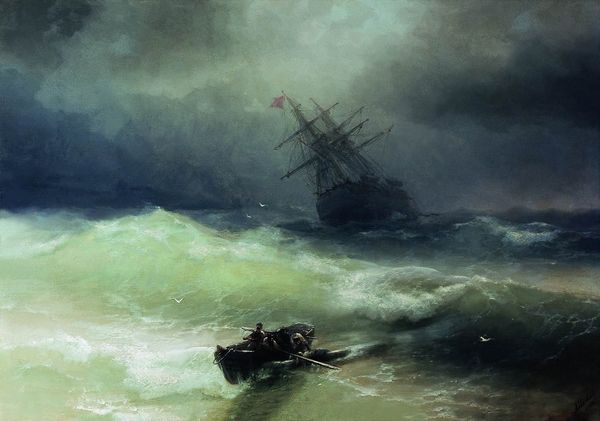
painting, oil-paint
#
painting
#
oil-paint
#
landscape
#
romanticism
#
cityscape
#
history-painting
#
academic-art
Copyright: Public domain
Curator: Welcome, everyone. We’re looking at a painting titled “Sea View”, created by Ivan Konstantinovich Aivazovsky. Although it’s not specifically dated, Aivazovsky was most active during the Romantic period, and worked primarily in oil on canvas. Editor: The mood is instantly striking. It's tumultuous and ethereal all at once. The use of blue and purple tones washes over everything creating this drama. It feels… vaguely ominous, doesn't it? Curator: Yes, there is something undeniably unsettling in its beauty. Note how Aivazovsky contrasts the rough, almost chaotic brushwork in the foreground waves with the smoother, more blended brushstrokes used to depict the sky and distant mountains. It draws the eye in to the dramatic meeting of the water and the land. Editor: Absolutely. It feels like there is something allegorical in how it depicts an ongoing struggle for control or dominance of space. The ocean seems so aggressively present against the implied fortifications on the cliff. Who is in control? What purpose do the figures on board that central ship serve? Or what systems of power is it supposed to uphold? Curator: One could see that expressed through the use of color as well. The warm light from above casts soft, roseate tones throughout the sky, but the land itself—the site of these suggested fortifications—is consumed by shadow. There is a clear hierarchy communicated via the distribution of light. Editor: I agree. And even the composition itself speaks volumes about societal tensions, if not even active combat. I'm intrigued by the lone ship battling those dominant waves, dwarfed in scale, but perhaps full of laborers on deck fighting for their lives in what would almost be considered a form of historical or contemporary statehood and imperialism. Curator: That’s an insightful reading. Aivazovsky's work frequently explores themes of humanity’s relationship to nature and power, though more subtly than many of his contemporaries. Editor: It all comes together, doesn’t it, in a painting where the elements of line, color, texture all support a visual commentary about control and vulnerability. Curator: Precisely, and analyzing how Aivazovsky manipulates those formal elements provides so much insight into broader themes present in the work. Editor: And maybe a small amount of critical self-reflection along the way.
Comments
No comments
Be the first to comment and join the conversation on the ultimate creative platform.
